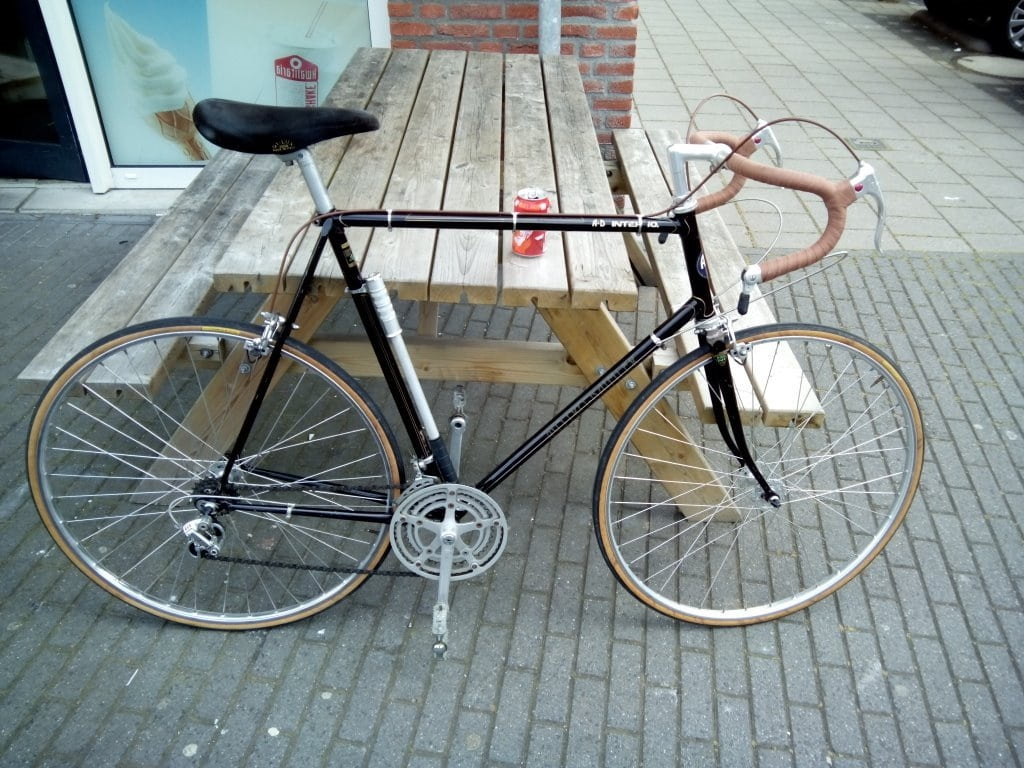bikeworkshop
Old School Grand Master
A major source of confusion is that tyres come in an actual measurable size - the bead is rigid so the rim diameter has to be exactly that, and the inflated tyre width is fixed by the fabric within the tyre - there's no stretch.
Inner tubes are a butyl rubber material. if you pump them up, they will keep getting bigger - so they need to start smaller than the inside of the tyre, but fill that space without too much stress.
Once in a while, a customer brings back a tube they've pumped up loose, until its about 6 feet across, wondering if it's too big for their 622/700 wheel.
Consequently a tube will fit a range of sizes.
It will get bigger as you Inflate it.
They usually display a range of sizes on the box for this reason.
Sometimes they even display an overlap in wheel sizes.
If you put a 700x23-28 tube into a 700x32 tyre, it will be a little more prone to puncture, but it will save rotating weight.
My spares are technically one size too small, easier to carry.
If you use a 700x32-38 tube in the 32 tyre, it will be a little harder to keep from being trapped under the bead, leading to a blowout on inflation, usually by the valve hole like you had at your first attempt.
The volume of the tyre also depends on wall thickness.
Fitting a 32-38 tube into a 32mm schwalbe marathon plus is unwise, as the tyre wall is so bulky, it's the size of a 28 in there.
The difference between 622 (700) and 630 (27×1&1/4) is insignificant for the tube - 700x32 is the size you're aiming for.
The 27/700 tyres aren't interchangeable though, although often you can fit 700 wheels on a 27 bike, as long as there's (630-622/2) 4mm drop available on the blocks.
I have literally fitted more tubes than some people have had hot dinners - at the counter, 8 walk in punctures a day is not unusual - my colleagues don't let me in the workshop much in case I drone on about the doublethink of vegans or the poor design of park tools
Inner tubes are a butyl rubber material. if you pump them up, they will keep getting bigger - so they need to start smaller than the inside of the tyre, but fill that space without too much stress.
Once in a while, a customer brings back a tube they've pumped up loose, until its about 6 feet across, wondering if it's too big for their 622/700 wheel.
Consequently a tube will fit a range of sizes.
It will get bigger as you Inflate it.
They usually display a range of sizes on the box for this reason.
Sometimes they even display an overlap in wheel sizes.
If you put a 700x23-28 tube into a 700x32 tyre, it will be a little more prone to puncture, but it will save rotating weight.
My spares are technically one size too small, easier to carry.
If you use a 700x32-38 tube in the 32 tyre, it will be a little harder to keep from being trapped under the bead, leading to a blowout on inflation, usually by the valve hole like you had at your first attempt.
The volume of the tyre also depends on wall thickness.
Fitting a 32-38 tube into a 32mm schwalbe marathon plus is unwise, as the tyre wall is so bulky, it's the size of a 28 in there.
The difference between 622 (700) and 630 (27×1&1/4) is insignificant for the tube - 700x32 is the size you're aiming for.
The 27/700 tyres aren't interchangeable though, although often you can fit 700 wheels on a 27 bike, as long as there's (630-622/2) 4mm drop available on the blocks.
I have literally fitted more tubes than some people have had hot dinners - at the counter, 8 walk in punctures a day is not unusual - my colleagues don't let me in the workshop much in case I drone on about the doublethink of vegans or the poor design of park tools
Last edited:
